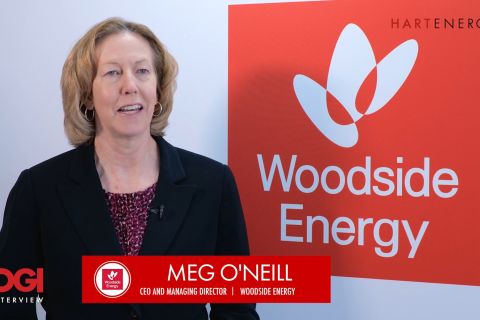Recent action by the U.S. Environmental Protection Agency (EPA) indicates that air emissions, especially of methane, will continue to be a priority at oil and gas production facilities. Also seemingly increasing are the EPA’s demands to settle cases involving illegal discharges to water and failure to have adequate spill control measures.
Air emissions enforcement
An extensive effort by the EPA and the state of New Mexico, which included flyover surveillance and field investigations, found failure to control emissions from storage facilities; failure to comply with inspection, monitoring and recordkeeping requirements; and failure to obtain required air emission permits at 25 oil and gas locations. To settle the resulting air pollution enforcement case, the company in this case—Matador Production Co.—will pay $1.15 million in civil penalties, spend at least $1.25 million on a supplemental environmental project (SEP), and incur at least $2.5 million in costs to upgrade its facilities.
For the necessary upgrades, the company must install new tank pressure monitoring systems to provide advanced notification of potential emissions and allow for immediate response action by the company. It must also make extensive improvements in design, operation, maintenance and monitoring. The SEP will include replacement of diesel engines, aerial monitoring for leaks at the company’s facilities and an $800,000 program to reduce emissions from pneumatic devices and vapor recovery units.
EPA’s proposed methane rules
In November 2022, the EPA announced a supplement to its November 2021 proposal for controlling methane.
“Oil and natural gas operations are the nation’s largest industrial source of methane, a highly potent climate pollutant that is responsible for approximately one-third of current warming resulting from human activities,” the agency said.
The November 2022 supplement will require “more comprehensive requirements” for “hundreds of thousands of existing oil and gas sources nationwide.” It will also “promote the use of innovative methane detection technologies and other cutting-edge solutions.” The supplement envisions a “super-emitter response program” that would “require operators to respond to credible third-party reports of high-volume methane leaks.” The proposed rules will also set a “zero-emissions standard for pneumatic controllers and pneumatic pumps.”
These enforcement and rulemaking efforts indicate the EPA—as well as state agencies in energy producing states—will continue to view methane and other air emissions from oil and gas facilities as an enforcement priority.
Spill control measures
Summit Midstream Partners settled criminal charges stemming from a rupture of its produced water gathering system that served 37 well pads, resulting in a 29-million-gallon discharge. While the company had already paid $20 million in civil penalties, its plea agreement required payment of an additional $15 million in criminal fines plus three years of probation. According to the Joint Factual Statement submitted by the government and the company as part of the plea process, the rupture “continued unabated for five months” before the company confirmed the leak.
Two other cases serve as a reminder that companies face enforcement action, including significant penalties, even when they have no illegal discharge. When the EPA inspections show required release control structures and plans are not in place, expect enforcement.
The EPA found that Phoenix Petroleum’s Spill Prevention, Control and Countermeasures (SPCC) were inadequate; its secondary containment for its oil storage tanks was deficient and it did not have a complete facility-wide SPCC Plan. The company submitted an adequate SPCC Plan, upgraded the containment structures and agreed to a $50,000 penalty as part of a settlement, according to the EPA’s news release.
And at AES Hawaii, the EPA said the firm had an inadequate Risk Management Program; the company’s documents did not show adequate training, nor did they show employees were provided written normal and emergency shutdown procedures. This company paid almost $200,000 to settle, according to the EPA’s news release.
EHS auditing
Penalties and fines of eight figures and six-figure penalties for inadequate documentation indicate oil and gas companies face increasing sanctions for unlawful air emissions, spills or failure to have proper spill measures in place. Companies should consider engaging lawyers and consultants experienced in Environmental, Health and Safety (EHS) audits. Noncompliance items discovered in an EHS audit that are reported and timely addressed will result in smaller or elimination of fines and penalties. Due to the Texas EHS Audit Privilege Act, audits can be particularly beneficial to Texas facilities.
Recommended Reading
NAPE: Turning Orphan Wells From a Hot Mess Into a Hot Opportunity
2024-02-09 - Certain orphaned wells across the U.S. could be plugged to earn carbon credits.
Exxon Versus Chevron: The Fight for Hess’ 30% Guyana Interest
2024-03-04 - Chevron's plan to buy Hess Corp. and assume a 30% foothold in Guyana has been complicated by Exxon Mobil and CNOOC's claims that they have the right of first refusal for the interest.
Petrobras to Step Up Exploration with $7.5B in Capex, CEO Says
2024-03-26 - Petrobras CEO Jean Paul Prates said the company is considering exploration opportunities from the Equatorial margin of South America to West Africa.
The OGInterview: How do Woodside's Growth Projects Fit into its Portfolio?
2024-04-01 - Woodside Energy CEO Meg O'Neill discusses the company's current growth projects across the globe and the impact they will have on the company's future with Hart Energy's Pietro Pitts.
Chevron Hunts Upside for Oil Recovery, D&C Savings with Permian Pilots
2024-02-06 - New techniques and technologies being piloted by Chevron in the Permian Basin are improving drilling and completed cycle times. Executives at the California-based major hope to eventually improve overall resource recovery from its shale portfolio.





